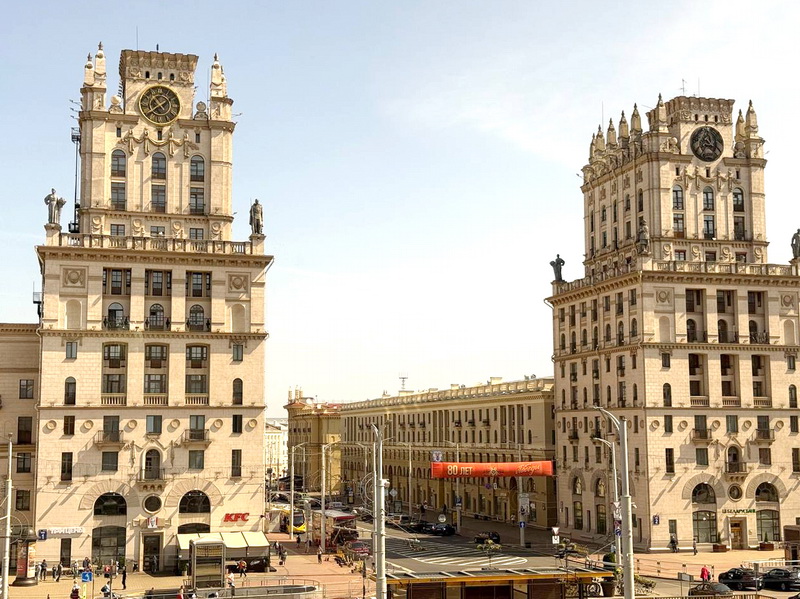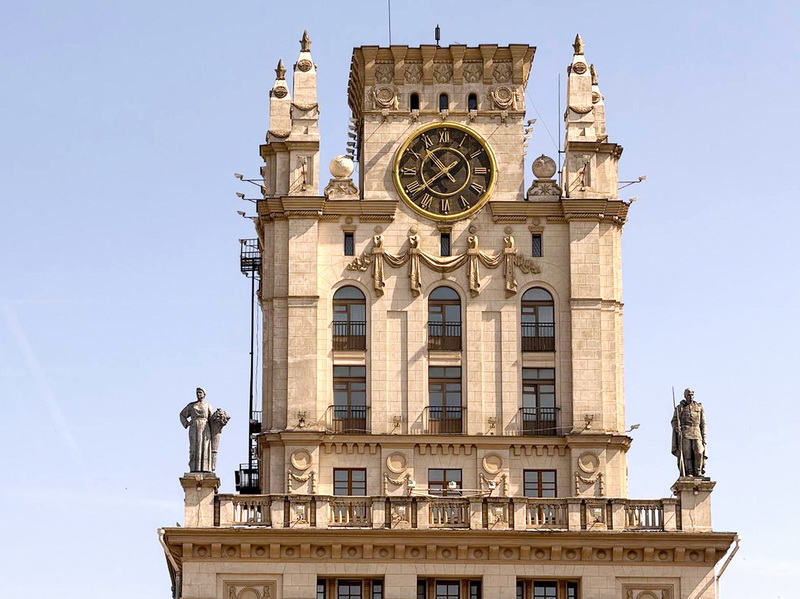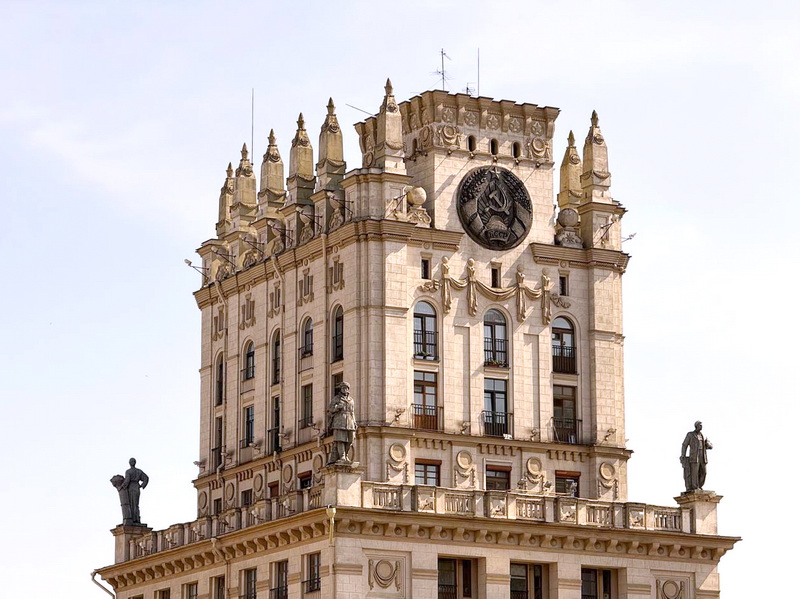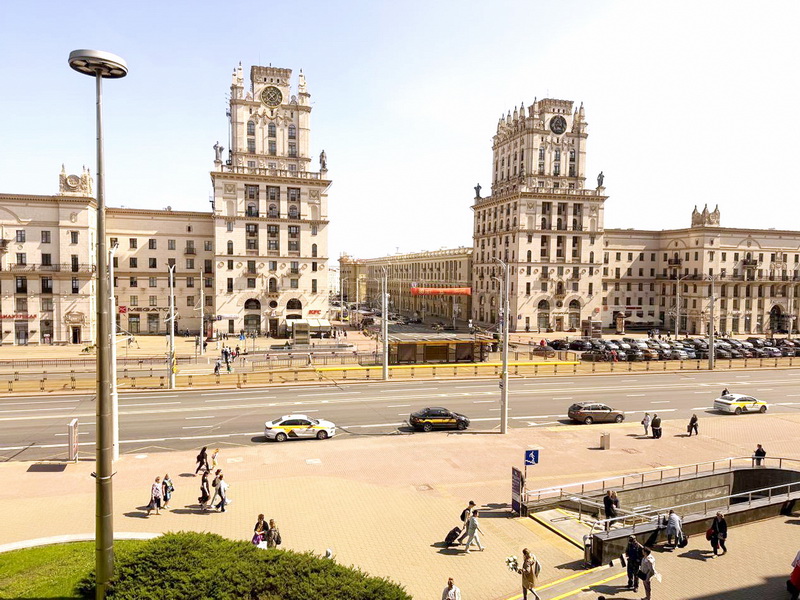History of Creation
The City Gate was built in the early 1950s as part of Minsk’s post-war reconstruction. The project was developed by Leningrad architect Boris Rubanenko, who brought to life the idea of a grand entrance to the city. The main construction work was completed by 1953. One of the key historical features of the complex is the clock installed on one of the towers. This clock is the largest in Belarus, with a diameter exceeding 3.5 meters. It was manufactured over a hundred years ago in Germany and arrived in Minsk as a war trophy after World War II.
Architecture of the Complex
The architectural style of the City Gate is a vivid example of Stalinist classicism. The complex consists of five-story residential buildings, with two eleven-story twin towers rising at the corners. The facades are adorned with columns, decorative elements, and sculptures depicting peasants, workers, and Red Army soldiers, giving the building a monumental and solemn appearance. The towers symbolize the strength and power of the Soviet era, and their strict and majestic forms blend harmoniously into the image of central Minsk.
Tours with a Visit to the City Gate
Tours featuring a visit to the City Gate are popular among tourists and visitors to Belarus. This site is often included in sightseeing tours around Minsk and themed routes dedicated to architectural heritage. For those interested in the history and culture of the capital, a tour from Minsk along this route is an excellent way to get to know the city better. Booking a tour in advance is possible, with various route options often combined with visits to other landmarks in central Minsk.



